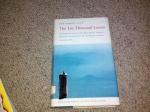|
This section contains 2,154 words (approx. 8 pages at 300 words per page) |

|
SOURCE: Keene, Donald. “The Uses of Japanese Poetry.” In The Pleasures of Japanese Literature, pp. 45-70. New York: Columbia University Press, 1988.
In the following excerpt, Keene concentrates on the eulogies of Hitomaro and Okaru's “Dialogue on Poverty” as representative works within the Man'yōshū.
… About fifty years after the compilation of the Kojiki the greatest collection of Japanese poetry, the Man'yōshū, was put into more or less its present shape. It is almost inconceivable that Japanese poetry could have evolved so rapidly. Many poems in the Man'yōshū were in fact composed well before the presentation of the Kojiki in 712. Of course the songs in the Kojiki represent the state of Japanese poetry not at the time of the compilation, but much earlier; but the contrast between the primitive Kojiki poetry and the supremely accomplished Man'yōshū poetry is overwhelming.
The poems of the Man'yōshū can...
|
This section contains 2,154 words (approx. 8 pages at 300 words per page) |

|


